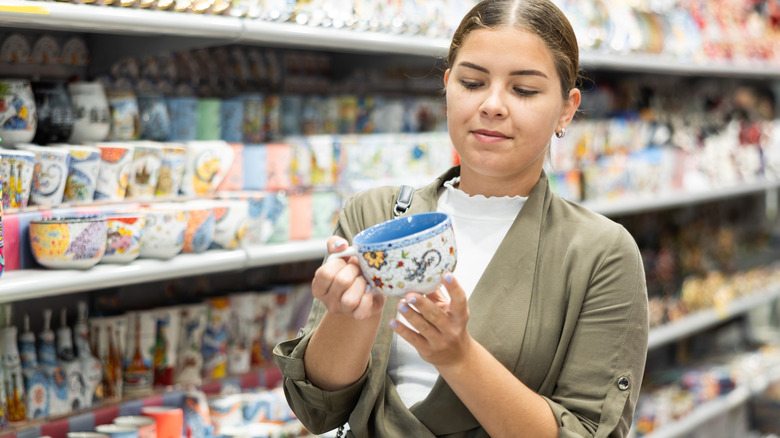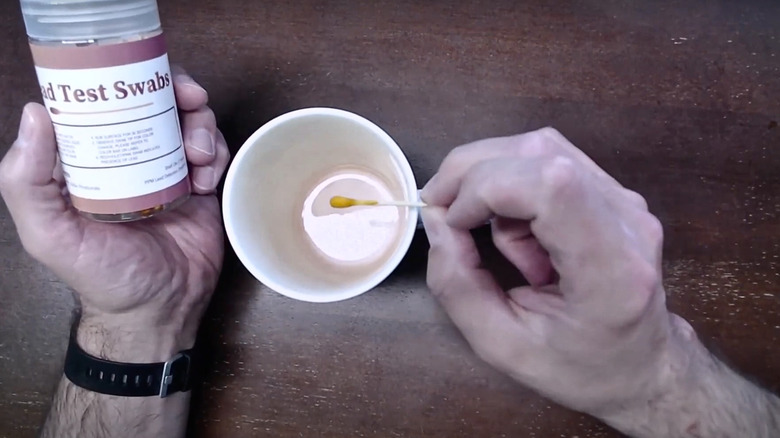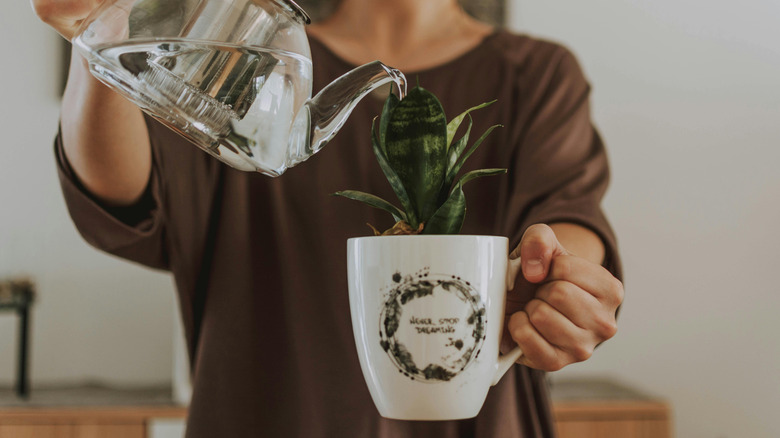The Potential Hazard That Could Be Hiding In Your Thrifted Mug Collection
We may receive a commission on purchases made from links.
Nothing beats the first sip of coffee in the morning, especially when you've got your favorite thrifted mug in hand. That said, there may be more to your second-hand mug collection than meets the eye. For many years, pottery glaze included lead to help speed up the firing process, improve the look of dishware, and make it more durable. Although this method has been largely out of practice since the 1980s, your vintage or thrifted dishes may still pose a hazard.
Dishware that contains lead runs the risk of that lead leaching into your food and drinks. When ingested, lead can negatively affect every system in your body, depending on the amount you've consumed. With coffee mugs in particular, it's likely that the lead would be ingested in small amounts that build up slowly over time. Lead poisoning can be hard to detect at first but common symptoms in adults include high blood pressure, headaches, mood fluctuations, memory issues, and joint or muscle pain. In the most severe cases, lead poisoning can be fatal.
How to tell if your mug has lead
So how do you tell if your favorite thrifted mug contains lead? The easiest and most definite way is to use a lead testing kit, like this AAwipes Rapid Testing Test Swab Kit. These kits are generally very affordable, easy to find, and even easier to use. For the best results, carefully follow the instructions on the specific kit you purchase. In most cases, you will take a test swab and rub it around the inside and outside of your mug. If the mug contains lead, the swab will change color.
Just because thrifted mugs may contain lead doesn't mean you should stop shopping for dishware second hand. When shopping for mugs or other dishes, just remember to look out for a few warning signs. Mugs that appear handmade or vintage, are excessively worn, or contain bright colors (especially red and yellow) are more likely to contain lead. This is especially true for mugs made prior to the 1980s. You can also bring a lead testing kit with you to the thrift store to test mugs before purchasing them.
Can you rescue a lead mug?
Unfortunately, once you know a dish contains lead, there is no way to remove it, regardless of how many times you scrub or run your mug through the dishwasher. But don't worry, all is not lost, there are several creative ways to repurpose old mugs that don't involve you ingesting harmful chemical elements. For example, if you're looking for a more creative solution, you can smash the mug and use the pieces to create a beautiful mosaic and turn old mugs into beautiful wall art.
Smashing vintage mugs can feel upsetting, so if you'd rather keep the mug intact, use it to pot indoor plants, hold pens and other loose items, or keep it in your craft bin and fill it with water for washing off paint brushes. If you have a handful of lead-ridden mugs, string them up outside to create a stunning hanging garden feature instead. When thinking of ways to repurpose your mug, just remember you will want to avoid anything that involves food, such as using the mugs for cookie cutters or soup bowls.


